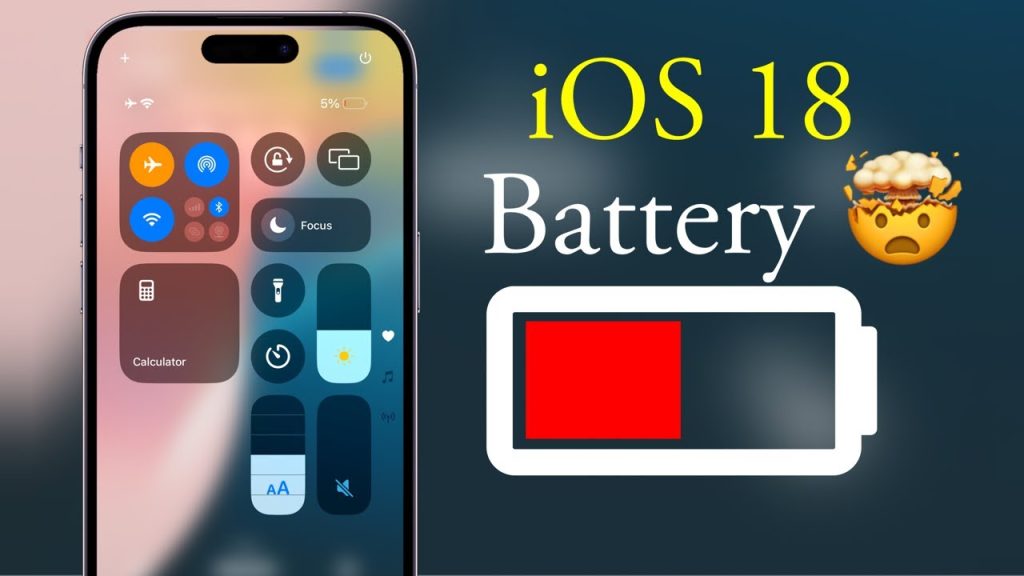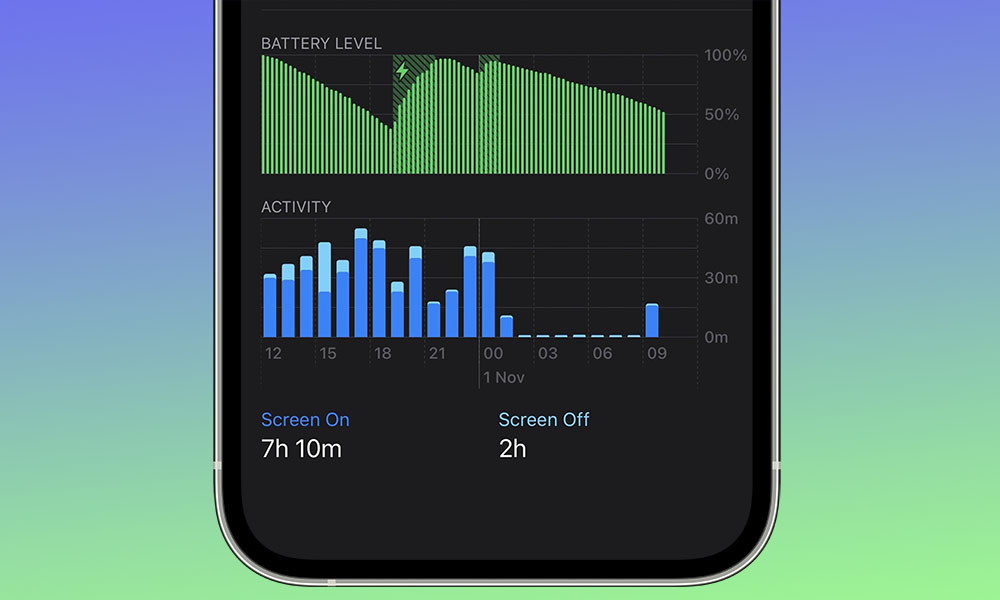The release of iOS 18 has brought a range of enhancements aimed at improving the overall user experience on Apple devices. Among the most notable improvements are those focused on battery life and performance. These enhancements are crucial, as they directly impact the daily usability of iPhones and iPads, ensuring devices run smoothly and efficiently for longer periods. This article will analyze the performance improvements and battery optimizations introduced in iOS 18, providing a detailed look at how these changes benefit both developers and users.
Performance Improvements in iOS 18

Optimized System Architecture
One of the key areas of improvement in iOS 18 is the optimization of the system architecture. Apple has reworked the core of the operating system to ensure that it runs more efficiently on a wide range of devices, from the latest iPhone models to older hardware. This optimization includes better memory management, more efficient use of processing power, and streamlined system processes.
Faster App Launch Times
A significant performance boost in iOS 18 is the reduction in app launch times. Users will notice that apps open more quickly, and this improvement is due to several under-the-hood changes. These include pre-loading critical app components, optimizing the loading of app resources, and using advanced caching techniques. For developers, this means their apps will feel more responsive and engaging to users.
Enhanced Multitasking
iOS 18 has also improved multitasking capabilities, allowing users to switch between apps more smoothly and efficiently. This is particularly evident in features like Split View and Slide Over on the iPad, where users can run multiple apps side by side. The improved multitasking is made possible through better resource allocation and prioritization, ensuring that apps running in the background do not negatively impact the performance of foreground apps.
Optimized Graphics Rendering
Graphics rendering has seen substantial improvements in iOS 18, making animations and transitions smoother and more fluid. This is achieved through enhancements in the Metal framework, which allows developers to create high-performance graphics and compute-intensive applications. The optimizations in Metal reduce the CPU and GPU load, resulting in better performance and lower power consumption.
Battery Life Enhancements in iOS 18
Advanced Battery Management
iOS 18 introduces advanced battery management features that help extend the battery life of Apple devices. These features include more intelligent battery charging algorithms that adapt to the user’s charging habits. For example, iOS 18 can learn when a user typically charges their device and adjust the charging rate to minimize battery wear. This not only extends the overall lifespan of the battery but also ensures that the device is fully charged when needed.
Adaptive Brightness and Display Management
The new adaptive brightness and display management features in iOS 18 play a significant role in conserving battery life. The operating system uses ambient light sensors to adjust the screen brightness dynamically, ensuring that the display is not brighter than necessary. Additionally, iOS 18 optimizes the display refresh rate based on the content being viewed, reducing power consumption when displaying static images or less demanding content.
App Background Activity Control
iOS 18 gives users more control over app background activities, allowing them to manage which apps can run in the background and consume battery power. This feature is particularly useful for preventing battery drain from apps that are not actively being used. Developers need to ensure their apps handle background activities efficiently and respect the new user settings to avoid being restricted.
Enhanced Battery Health Monitoring
iOS 18 provides enhanced battery health monitoring, offering users more detailed insights into their battery’s condition. The Battery Health section in the Settings app now includes more comprehensive information about battery performance and recommendations for maintaining optimal battery health. This transparency helps users make informed decisions about their device usage and charging habits.
Developer Tools and APIs for Optimization
Energy Efficient Coding Practices
Apple encourages developers to adopt energy-efficient coding practices to create apps that are optimized for performance and battery life. With the release of iOS 18, Apple has updated its developer guidelines to include best practices for minimizing energy consumption. These guidelines cover various aspects of app development, from efficient use of system resources to optimizing network activity and reducing unnecessary background processes.
Performance and Energy Instruments
Xcode, Apple’s integrated development environment, includes powerful tools for analyzing app performance and energy usage. In iOS 18, these tools have been further enhanced to provide developers with more granular insights into how their apps impact device performance and battery life. Instruments like Time Profiler, Energy Log, and Memory Graph help developers identify and address performance bottlenecks and energy inefficiencies in their code.
App Thinning and On-Demand Resources
iOS 18 continues to support App Thinning and On-Demand Resources, techniques that help optimize app performance and reduce storage and energy usage. App Thinning ensures that users only download the components of an app that are necessary for their device, while On-Demand Resources allow developers to defer the downloading of large assets until they are needed. These features not only improve app performance but also contribute to better battery life by minimizing unnecessary resource usage.
Case Studies and Real-World Impact
Gaming Apps
Gaming apps are often resource-intensive and can significantly impact device performance and battery life. With iOS 18, developers of popular gaming apps have reported noticeable improvements in both areas. The enhanced graphics rendering capabilities and optimized use of the Metal framework have allowed games to run more smoothly while consuming less power. Users can enjoy longer gaming sessions without worrying about rapid battery drain.
Productivity Apps
Productivity apps, such as those for document editing, project management, and communication, benefit from the improved multitasking and system performance in iOS 18. Users can switch between multiple productivity apps seamlessly, and the reduced app launch times make the overall experience more efficient. Developers of these apps have leveraged the new tools and APIs to optimize background activities, ensuring that their apps remain responsive and energy-efficient.
Health and Fitness Apps
Health and fitness apps have also seen positive impacts from the battery and performance enhancements in iOS 18. These apps often rely on continuous data collection and real-time processing, which can be demanding on system resources. With iOS 18, developers have been able to optimize their apps to run more efficiently, providing users with accurate and timely health data without significantly impacting battery life. The advanced battery management features ensure that users can track their fitness activities throughout the day without needing frequent recharges.
User Experience Improvements
Smoother Animations and Transitions
One of the most noticeable improvements in iOS 18 is the smoothness of animations and transitions throughout the operating system. Whether opening apps, navigating menus, or switching between screens, users will experience a fluid and responsive interface. These enhancements contribute to a more enjoyable user experience, as lag and stutter are minimized, making interactions feel more natural and immediate.
Consistent Performance Across Devices
iOS 18 has been designed to deliver consistent performance across a wide range of Apple devices, from the latest models to older ones. This means that users with older iPhones and iPads can still enjoy the benefits of the new operating system without experiencing significant slowdowns. The optimized system architecture and efficient resource management ensure that even devices with less powerful hardware can run iOS 18 smoothly.
Prolonged Battery Life for Everyday Use
For everyday users, the battery life improvements in iOS 18 are particularly beneficial. Whether browsing the web, checking emails, or using social media, users will find that their devices last longer on a single charge. The intelligent battery management features and adaptive display settings work together to conserve power, allowing users to go through their day with fewer interruptions for recharging.
Conclusion
The release of iOS 18 brings a host of performance improvements and battery optimizations that significantly enhance the user experience on Apple devices. From faster app launch times and smoother animations to advanced battery management features, iOS 18 ensures that iPhones and iPads run more efficiently and last longer on a single charge.
For developers, these changes present new opportunities to optimize their apps for better performance and energy efficiency. By adopting best practices and leveraging the enhanced tools and APIs provided by Apple, developers can create apps that deliver exceptional experiences while conserving system resources.
In summary, iOS 18 is a substantial evolution in the Apple iOS ecosystem, focusing on enhancing both performance and battery life. These improvements not only benefit users by providing a more responsive and enduring device but also empower developers to build more efficient and innovative applications. As iOS 18 continues to roll out, its impact on mobile app development and everyday device usage will undoubtedly be profound, setting a new standard for performance and energy efficiency in the world of mobile operating systems.
